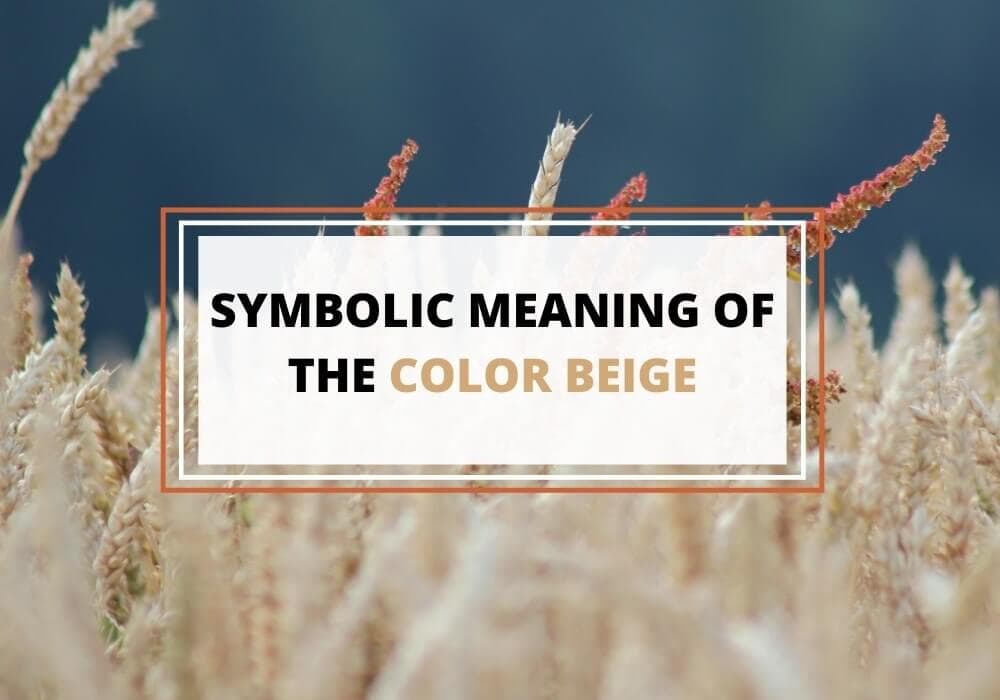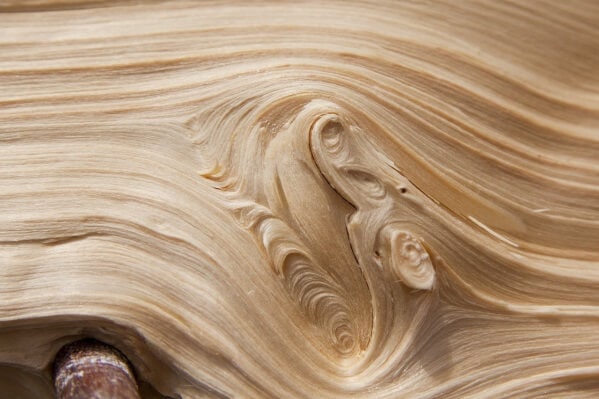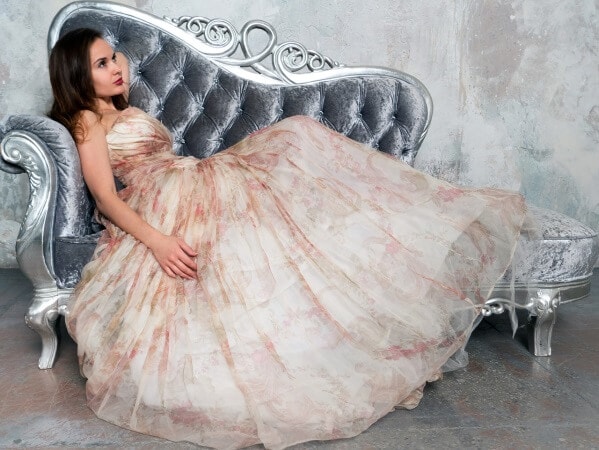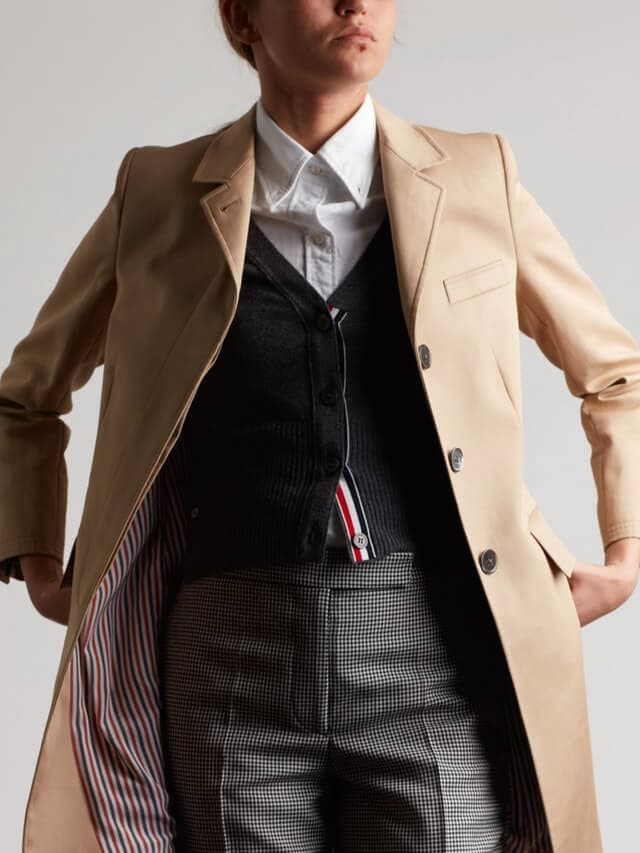
Table of Contents
The color beige is a somewhat neutral shade, often considered dull and monotonous. However, it’s a beautiful, calm and relaxing color that has many positive connotations and psychological benefits. Let’s dig a little into the history of the color beige, its symbolism and how it’s used today.
History of the Color Beige

The word ‘beige’ was first used in France somewhere in the middle of the 19th century. It was the name given to the color of wool, which naturally has a cream-like color. Although the color beige has been used for hundreds of years, after brown and yellow, it only got its name in English in 1887.
In the prehistoric Lascaux Cave Paintings in France, it’s quite easy to see that different shades of beige were used thousands of years ago. Artists mixed brown, yellow and gray or white pigments together to make lighter, darker or just different shades of brown. This means that beige was in use much before it was given a name.
In 2010, a large variety of pale and light brown shades were discovered and these all fit into the category of beige. Nowadays, beige is a highly popular color used in home decoration and design. The main reason for its popularity is because it provides an excellent balance of calm, neutrality and comfort which is ideal for your home.
What Does the Color Beige Symbolize?
Beige is a combination of pale/light gray, yellow and brown, commonly considered a pale yellowish color. It’s not one exact type of color since it has varying degrees and shades.
Beige is a flexible, dependable and conservative color that offers the warmth of brown and some cool and crispness of white. While it’s soothing and refreshing, it’s also often viewed as dull and boring.
Beige represents the working world. Since beige is a serene, simple and plain color, it’s often used in the interior designs of homes, schools, offices and hospitals. It’s symbolic of the working world. Even the very first computers were designed in the color beige.
Beige is strong and energetic. Beige is a color that refers to strength and energy since it’s an earthy color that’s usually used for interior designing. It’s a dependable color that can be trusted.
Beige is associated with delicious food. Beige colored foods, desserts and delicacies are generally delicious. Some foods include mille-feuille, rice pudding, French fries, mashed potatoes and fish and chips. This is why the color is closely associated with deliciousness.
Beige in dreams: Some believe that dreaming of beige colored items could have either a positive or negative meaning in your life. It indicates that you can see the truth as it is and you’re intelligent enough to figure out someone’s criminal or inappropriate behaviour.
Symbolism of Beige in Different Cultures
- In some Eastern and Asian cultures beige, like brown, is commonly associated with mourning.
- In Chinese horoscopes, darker shades of beige are used to represent the earth. The Chinese also consider darker shades of beige to be industrious and grounded colors.
- In Europe, beige was associated with rustic, plainness and poverty. Similar to brown, it’s considered to be one of the least popular colors.
Personality Color Beige – What It Means

Being a beige personality means that you’re someone whose favorite color is beige. If this is the case, you might want to check out the following list of character traits that are commonly found in all beige personalities. Of course every individual is unique but when it comes to color psychology, it’s been found that many people who love the same color share some common characteristics. So let’s go ahead and see which of these are applicable to you.
- People who love beige tend to focus on the simple and basic things in life like friends, family and simple comforts.
- They prefer to blend in with the crowd rather than stand out.
- Beige personalities aren’t naturally impulsive but they may sometimes have obsessive compulsive tendencies for hygiene and cleanliness.
- They’re adaptable and find it easy to get along with others amicably.
- They have a reliable and dependable nature.
- They don’t lose their heads in difficult situations. Beige personalities tend to keep their cool even in the worst of situations which is a trait people find most attractive about them.
- On the negative side, they are very trusting and this can leave them vulnerable to deception.
- They’re intelligent and always stay up to date on the latest news. They take an interest in everything that happens in the world and their areas of interest.
- They’re very empathetic to the point where seeing someone else suffering can affect them emotionally.
- They like to have a plan for everything.
Positive and Negative Aspects of the Color Beige

Although we may not realize it, color is an extremely powerful force that’s all around us and in our lives. Certain colors can make us feel a certain way and beige is no exception.
Since beige is made up of brown and yellow, it has similar attributes to both the colors. It can evoke a sense of reliability and strength and is often seen as a solid, dependable and stable color. It can even give you a sense of security and safety. A pastel color that transmits serenity and harmony, beige has a visual impact that’s both calming and soothing and can be used to relieve anxiety.
On the downside, too much beige can make you feel lonely and sad like you’re in a desert that’s isolating you from the rest of the world. Darker shades of beige have been known to cause negative feelings such as depression, lethargy and lack of motivation. Therefore, it’s important to remember to balance it out and avoid surrounding yourself with too much of the color.
Variations of the Color Beige
- Cream: this variation of beige has a cream-colored tone and is a very pale yellowish brown color. It’s also the color of cream produced by cattle that graze on natural pastures.
- Unbleached silk: this is one of the traditional Japanese colors which has been in use since 660 CE.
- Buff: a pale, yellow-brown shade of beige, this color has got its name from the natural color of leather before it’s dyed into another color. It was first used in 1686 in the London Gazette.
- Desert Sand: this color is a deeper shade of beige – a pale orange yellow. In the 1960s, the color was described as a shade of ‘beige’ by the American Telephone & Telegraph company. It’s commonly referred to as the color of the desert.
- Ecru: this is a grayish yellow variation of beige used to refer to fabric like linen and silk in the unbleached state. The word ‘ecru’ literally means ‘unbleached’ or ‘raw’.
- Khaki: Khaki, like ecru, is also a light brownish yellow color that’s popularly used for army uniforms and camouflage purposes around the world.
- French beige: this is the color of natural, freshly shorn wool.
- Mode beige: this is a very dark variation of the color beige, which is more of a light olive brown. Its name was first used as a color name in 1928.
The Use of Beige in Fashion and Jewelry

If you’re looking for a clothing item that has ‘professional’, ‘authoritative’ and ‘responsible’ written all over it, beige is one of the best colors you could pick. On the other hand, if you’re not looking to stand out and prefer to blend into the crowd, this color is perfect for that too.
Although many people view beige as a monotonous and dull color, it’s actually extremely popular in the fashion world. Since its conservative and understated, it’s considered to be ‘timeless’ in fashion. For anyone wanting to wear a classic outfit that will last, beige is just the right choice.
When it comes to fashion, there’s nothing boring about this color. In fact, some designers claim that it captivates your style and wardrobe and defines your personality.
The color beige blends very well with almost any skin tone and is quite easy to match with other colors. You can easily pair it with reds, blacks or blues. Since it’s neutral, it doesn’t have any complementary colors that it works best with. Pairing it with bolder colors is a great idea since it’ll just sit back and allow the accents to do all the work.
In Brief
The sandy, pale fawn color that is beige doesn’t actually have a lot of symbolism behind it. However, since it’s derived from yellows, browns and grays, it could have similar meanings as those colors. Seen as an uninteresting and plain color in the past, its popularity increases by the day and it remains extensively in use throughout the world.








